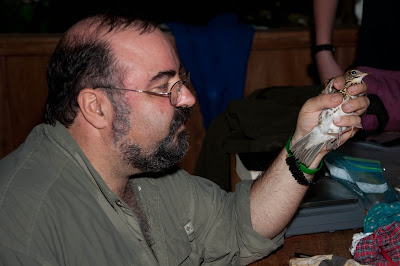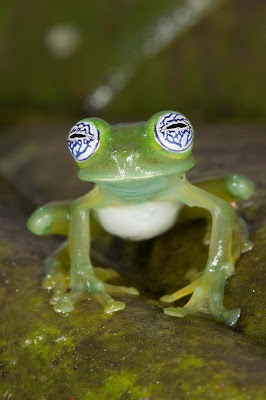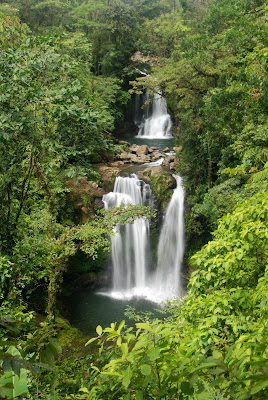CAS Staff Teaches Litchfield High School Students in the Costa Rican Rainforest — Presentation 4/27/10
Between March 5 and March 16 Connecticut Audubon Society staff members travelled to the Costa Rican rainforest again to teach Connecticut high school students about the importance of rainforest conservation as part of the Forman School Rainforest Project. This unique hands-on biology course based out of the Forman School in Litchfield, but also catering to high school seniors and juniors of the local public high schools (Litchfield High School and Wamogo Regional School), is currently in its 17th year. Every year a group of 12-14 students travels to the remote (and difficult to reach) rainforest preserve Rara Avis, where they work around the clock studying the area’s biodiversity and developing sustainable non-timber resource projects that can provide local people with alternatives to the commonly used slash-and-burn method of agriculture.
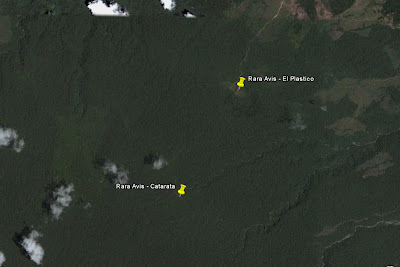 Rara Avis Rainforest Preserve is surrounded by Braulio Carrillo National Park, a vast rainforest area on
Rara Avis Rainforest Preserve is surrounded by Braulio Carrillo National Park, a vast rainforest area onthe Caribbean slope of northeastern Costa Rica
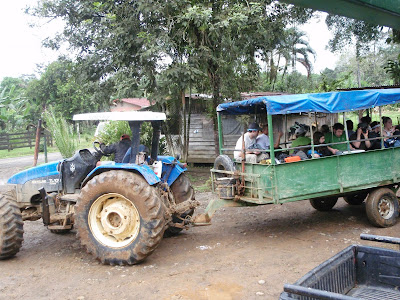 The only access is by 4-wheel drive tractor-pulled cart
The only access is by 4-wheel drive tractor-pulled cart 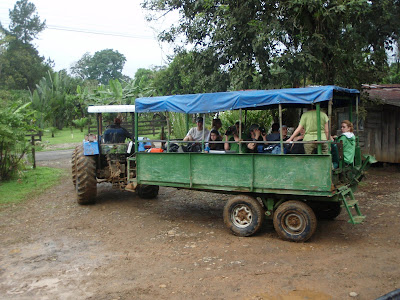
 and even that can be tricky at times!
and even that can be tricky at times!
Since its inception the project has been a demonstration project of sorts, researching different ways to reveal the tremendous value of an intact rainforest – both biologically and financially. Only once people realize that it pays to leave forest intact and use its resources intelligently rather than replacing it with poor quality pasture land, a major step has been taken towards the preservation of these important habitats.

 Bay-headed Tanager (Tangara gyrola)
Bay-headed Tanager (Tangara gyrola)Frank and his team also carry out studies on the local hummingbird populations and document the avian diversity in the preserve each year.
 The bird team carries out experiments with the local hummingbird population
The bird team carries out experiments with the local hummingbird population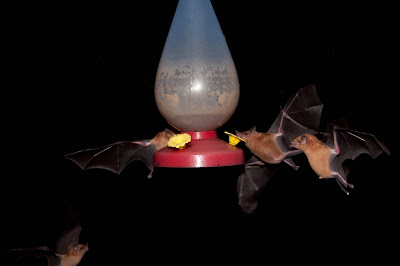
After dark, nectar-feeding bats (Carollia castanea) take over the feeders
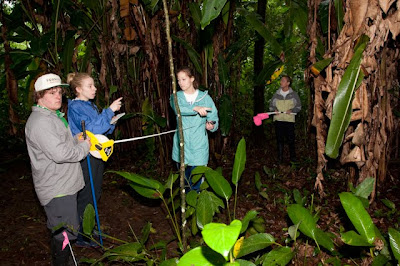 Students stake out study plots to monitor poison-dart frog populations
Students stake out study plots to monitor poison-dart frog populations
 Strawberry Poison-dart Frog (Oophaga pumilio)
Strawberry Poison-dart Frog (Oophaga pumilio)
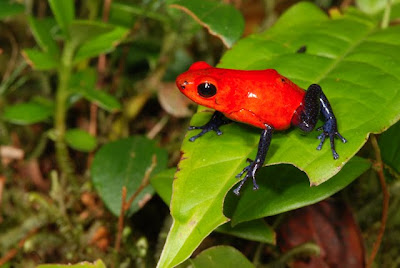 Twan has been studying declining amphibian populations in Costa Rica for many years and his team has been documenting the recovery of some critically endangered amphibian species in the preserve, species that have all but gone extinct after being infected with a water-borne fungal pathogen in the late 1980s.
Twan has been studying declining amphibian populations in Costa Rica for many years and his team has been documenting the recovery of some critically endangered amphibian species in the preserve, species that have all but gone extinct after being infected with a water-borne fungal pathogen in the late 1980s.
Even though the devastating effects of this disease on amphibian populations are best known from the tropics where many species are going extinct while researchers frantically try to come up with creative ways to save them, this is truly a global phenomenon and the pathogen has been reported from all continents, including North America. Twan is also involved with research programs in Connecticut that monitor local amphibian populations and track the spread of the disease.
 Juvenile Fer-de-Lance (Bothrops asper), the most dangerous snake in Central and South America
Juvenile Fer-de-Lance (Bothrops asper), the most dangerous snake in Central and South America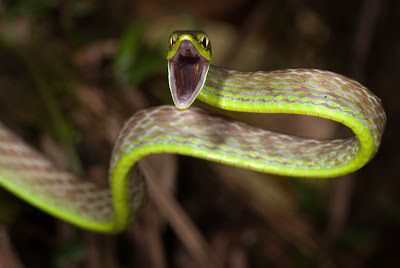 This Short-nosed Vine Snake (Oxybelis brevirostris) is not dangerous at all, but fools most people
This Short-nosed Vine Snake (Oxybelis brevirostris) is not dangerous at all, but fools most people A bizarre Yellow-spotted Night Lizard (Lepidophyma flavimaculatum)
A bizarre Yellow-spotted Night Lizard (Lepidophyma flavimaculatum)
 Banded Slug-eater (Sibon annulata). Most tropical snakes have a highly specialized diet
Banded Slug-eater (Sibon annulata). Most tropical snakes have a highly specialized diet
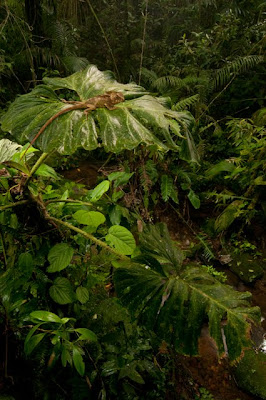
Helmeted Iguana (Corytophanes cristatus) in the lush rainforest vegetation
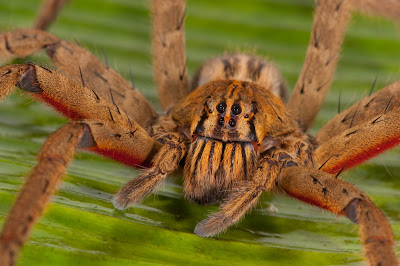 Cupiennius coccineus is a large hunting spider, similar to wolf spiders
Cupiennius coccineus is a large hunting spider, similar to wolf spiders
A fourth team researched the dazzling moth diversity in Rara Avis, a group of animals that still remains largely unstudied.
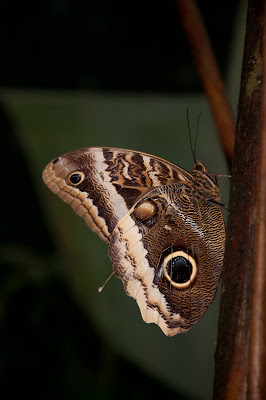 Owl Butterfly (Caligo atreus), named after the large eyespots on the closed wings
Owl Butterfly (Caligo atreus), named after the large eyespots on the closed wings
that supposedly deter predators by resembling an owl

 Students work day and night on their projects
Students work day and night on their projects
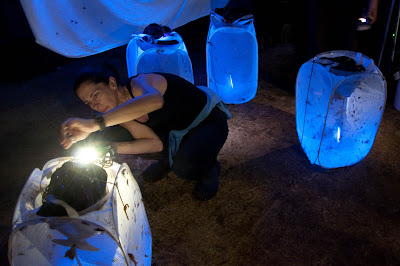 Butterfly traps with black lights are placed throughout the forest to capture moths and other nocturnal
Butterfly traps with black lights are placed throughout the forest to capture moths and other nocturnal
insects and retrieved later for analysis
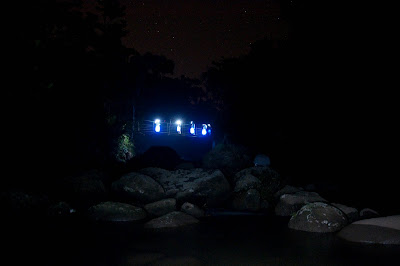
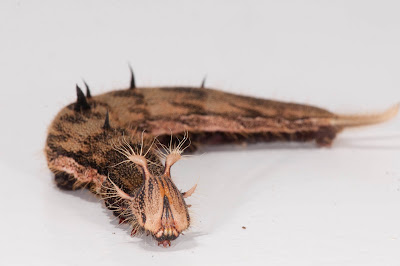 Caterpillar of the Owl Butterfly (Caligo atreus)
Caterpillar of the Owl Butterfly (Caligo atreus)
In the past, teams have also worked on radio telemetry of rainforest mammals (ranging from bats to tapirs), researching the potential to sustainably harvest and market canopy orchids and rare palms, and studying potential pharmaceutical uses of the venom of the largest Neotropical ant, the bullet ant (Paraponera clavata) in treatment of stroke victims.
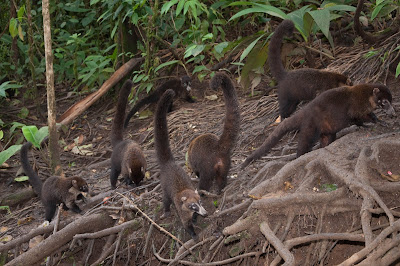 Coati (Nasua narica) a relative of our raccoon
Coati (Nasua narica) a relative of our raccoon
 Leaf-cutter Ants (Acromyrmex octospinosus) are ubiquitous in a tropical rainforest
Leaf-cutter Ants (Acromyrmex octospinosus) are ubiquitous in a tropical rainforest
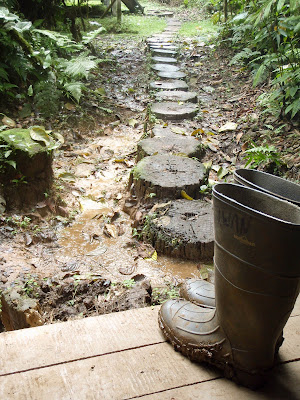
 If you would like to learn more about this project and hear first-hand accounts of the experience and discoveries, on Tuesday April 27 students will be presenting their findings during their annual dissertation day. The event is open to the public and takes place at the Forman School’s Johnson Art Center, 12 Norfolk Road, Litchfield and starts at 8:45AM.
If you would like to learn more about this project and hear first-hand accounts of the experience and discoveries, on Tuesday April 27 students will be presenting their findings during their annual dissertation day. The event is open to the public and takes place at the Forman School’s Johnson Art Center, 12 Norfolk Road, Litchfield and starts at 8:45AM.



